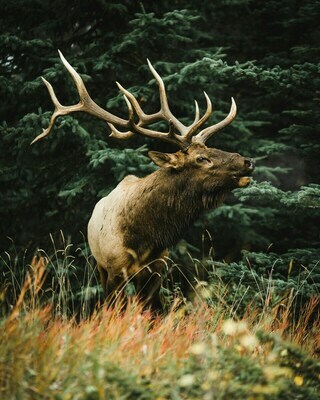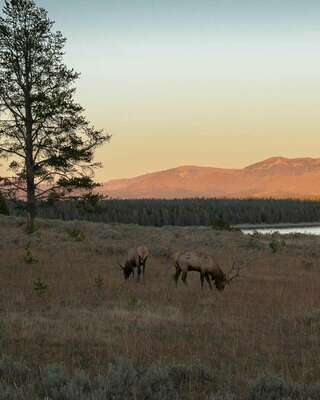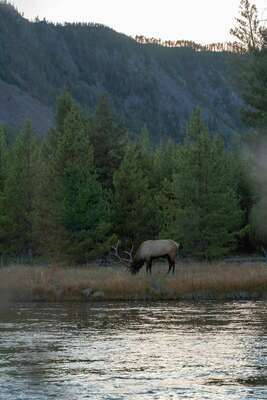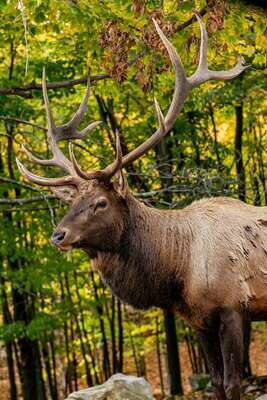Understanding Elk Conservation: The Role of Hunting in the Pacific Northwest
In the Pacific Northwest, two subspecies of elk, Roosevelt elk and Rocky Mountain elk, play significant roles in the region's ecosystem. These majestic animals, known for their size and the annual shedding of their antlers, are essential to understanding conservation efforts, especially as they face challenges like chronic wasting disease. The Rocky Mountain elk, one of the elk in North America, alongside the Roosevelt elk, offers fascinating elk facts that underscore their importance.
Elk hunting in the Pacific Northwest not only contributes to the management of elk populations but also supports conservation initiatives that aim to protect both the Roosevelt and Rocky Mountain elk. Through careful regulation, hunters help maintain healthy herds, ensuring the sustainability of this iconic species for future generations, thereby honoring the hunting heritage and promoting wildlife management.
Understanding Elk Populations in the Pacific Northwest
Elk populations in the Pacific Northwest, particularly the Roosevelt and Rocky Mountain elk, have experienced significant changes due to human activities and natural factors. Historically, these majestic creatures faced declines from market hunting and extensive habitat loss linked to clearcutting and forage seeding programs. Today, shifts in timber harvesting practices are expected to further reduce their foraging habitats, potentially leading to smaller herd sizes and poorer health. This, in turn, forces elk to concentrate more on private agricultural lands, leading to increased human-elk conflicts, highlighting the critical need for quality habitat conservation.
Human settlement expansion, the presence of large predators, and ongoing timber harvesting adversely affect these herds. Additionally, diseases such as treponeme-associated hoof disease (TAHD) pose significant threats to their health and longevity. To combat these challenges, a nutrition-based approach to habitat management on intensively managed forestlands has been proposed, focusing on the nutritional ecology of elk during critical seasons. This approach includes wildlife habitat improvement practices such as prescribed burning and forest thinning.
Elk are not only vital to the ecosystem but also hold economic and recreational importance. They provide sustenance and cultural value to indigenous peoples and other local communities. Effective management strategies, including the creation of tall fences to protect agricultural lands and prioritizing key winter range areas for land acquisitions, are crucial. These measures aim to support the largest possible elk populations while minimizing conflicts and ensuring sustainable coexistence with human activities, emphasizing the importance of elk preserve efforts and elk restoration projects.
The Role of Hunters in Elk Conservation
Hunting, when conducted responsibly, serves as a crucial component in elk conservation efforts. It not only helps in managing elk populations but also provides significant funding for conservation initiatives. Here's how hunting heritage plays a vital role in these efforts.
Revenue and Conservation
License Sales and Taxes: The sale of hunting licenses and taxes on hunting equipment, including firearms and ammunition, generate substantial revenue. This financial support is critical for wildlife conservation, aiding in the acquisition and maintenance of public lands and funding state and federal wildlife agencies, thereby supporting wildlife conservation centers and their conservation work.
Pittman-Robertson and Dingell-Johnson Acts: These acts channel funds from the sale of hunting and fishing equipment towards conservation, demonstrating how hunters contribute directly to environmental stewardship and support wildlife conservation centers.
Hunting as a Conservation Tool
Experiencing Natural Heritage Hunting allows individuals to connect with their natural heritage, playing an active role in conservation efforts and supporting wildlife conservation centers.
Supporting Habitat Connectivity Through partnerships with conservation groups, hunters help protect wildlands, ensuring habitats are connected and ecosystems remain robust, contributing to wildlife conservation centers and Alaska wildlife conservation.
Ethical Hunting Practices
Correct Shot Placement Ethical hunting practices, including proper shot placement, ensure quick and humane harvesting of game, minimizing animal suffering.
Land Access and RespectEthical hunters respect private properties and adhere to regulations, often gaining access through proper channels and contributing to local conservation efforts by maintaining respectful relationships with landowners. Their commitment to public access is a testament to their dedication to conservation.
These practices highlight the integral role hunters play in conservation efforts, supporting both the health of elk populations and the broader environmental objectives in the Pacific Northwest, akin to the mission of a wildlife conservation center.
Conservation Initiatives and Partnerships
In the Pacific Northwest, a region characterized by diverse ecosystems and rich wildlife, the collaboration between various conservation groups and governmental agencies plays a pivotal role in sustaining the health and diversity of species like the elk. One notable organization, Conservation Northwest (CNW), is at the forefront of these efforts. CNW is committed to the long-term ecological health of the region, focusing on creating connected landscapes that support a wide range of species, including the Roosevelt elk, Canada lynx, and grizzly bears. Their initiatives, such as the Coast to Cascades Grizzly Bear Initiative, aim to establish and maintain wildlife corridors that are essential for the genetic diversity and survival of these species, embodying the principles of both wildlife conservation centers and Alaska wildlife conservation.
The U.S. Forest Service, in partnership with organizations like the Rocky Mountain Elk Foundation (RMEF), has been instrumental in enhancing habitats and managing wildlife populations effectively. Since 1987, their collaboration has led to significant advancements in habitat enhancement and research, benefiting not only elk but a myriad of other species. The Forest Service’s approach includes managing national forests to provide rich habitats for wildlife while also facilitating recreational activities like hunting and wildlife watching, which are crucial for the local economy. This synergy underscores the importance of wildlife conservation centers in these efforts.
Moreover, the involvement of community and volunteer groups adds a layer of grassroots support essential for the success of conservation efforts. The Olympic National Forest, for example, works with a variety of partners ranging from local nonprofits to national foundations, enhancing the forest’s mission through diverse initiatives. These partnerships help in managing vast landscapes more effectively, ensuring that conservation efforts are comprehensive and inclusive of the various needs of wildlife and human communities alike. This collaborative model is pivotal in fostering a conservation culture that values sustainable practices and the protection of natural heritage, aligning with the goals of Alaska wildlife conservation.
The Future of Hunting and Conservation
In the Pacific Northwest, the intersection of human infrastructure and wildlife habitats presents ongoing challenges for elk conservation. Roads and traffic, in particular, exert a considerable impact on elk populations by altering their natural behaviors and habitat usage, affecting migration corridors.
Energy ExpenditureElk are forced to expend more energy navigating around or crossing roads, which can deplete their reserves needed for survival and reproduction.
Habitat DisruptionThe presence of roads can fragment habitats, making it difficult for elk to access all parts of their natural range. This fragmentation often pushes them into less optimal areas, affecting their feeding and mating behaviors and challenging the integrity of elk habitat.
Increased Mortality RisksRoads increase the vulnerability of elk to both natural and human-induced threats. The risk of vehicle collisions is a direct threat, while easier access for hunters and predators can indirectly increase mortality rates.
Addressing these issues requires a multifaceted approach, focusing on better planning of road networks and considering the ecological needs of wildlife. Conservation efforts must integrate comprehensive land-use planning that includes wildlife corridors, also known as migration corridors, that allow safe passage for elk across landscapes dominated by human activity. Such initiatives not only benefit elk but also enhance the biodiversity of the entire ecosystem, ensuring a balanced coexistence between human developments and wildlife conservation.
Conclusion
Throughout this exploration of elk conservation in the Pacific Northwest, it becomes evident that the survival and flourishing of both Roosevelt and Rocky Mountain elk are closely intertwined with human activities, particularly hunting and habitat management. The critical roles that these activities play in maintaining healthy elk populations underscore the complex balance between conservation efforts and recreational hunting. As we have seen, responsible hunting practices, alongside strategic conservation initiatives, contribute significantly to sustaining the elk's natural habitats, ensuring their continued presence in the region's ecosystems.
Looking forward, the challenges facing elk conservation, such as habitat fragmentation and human-induced threats, call for a collaborative approach that includes hunters, conservation groups, and government agencies. By fostering a culture of respect for wildlife and supporting measures that minimize conflicts and promote coexistence, we can ensure the long-term viability of elk populations in the Pacific Northwest. Engaging with wildlife conservation centers and supporting Alaska wildlife conservation efforts not only benefit these majestic creatures but also reinforce the health and diversity of the entire ecosystem, leaving a lasting legacy of conservation for generations to come.
Please support The OutdoorsNW by subscribing today!
You may also like:
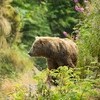




.png)

